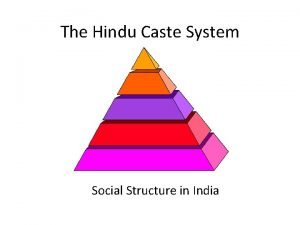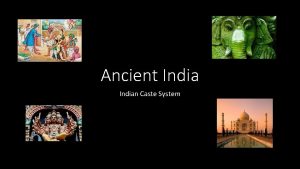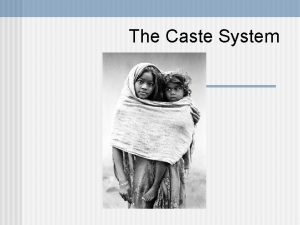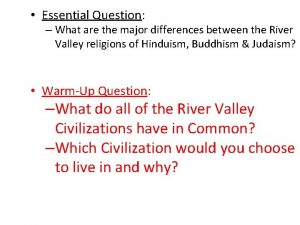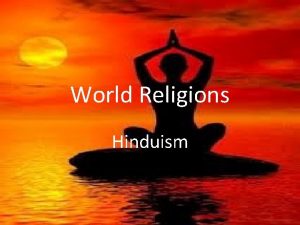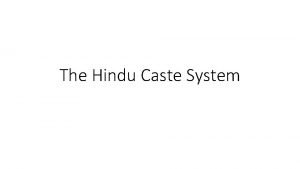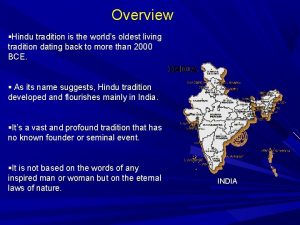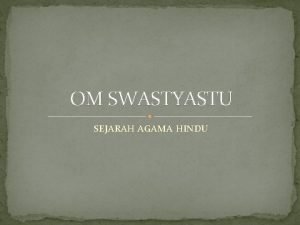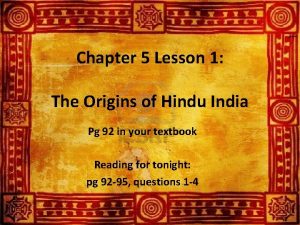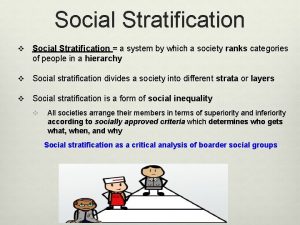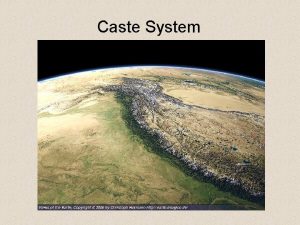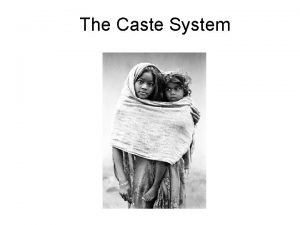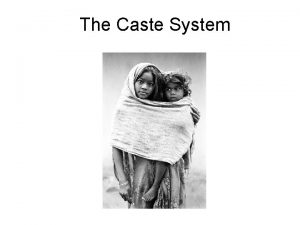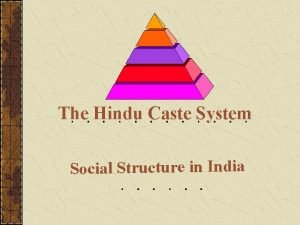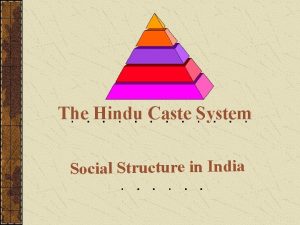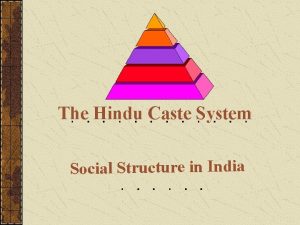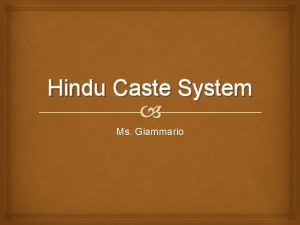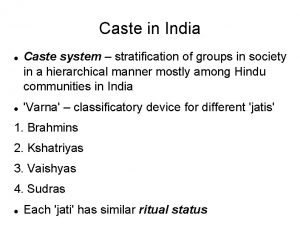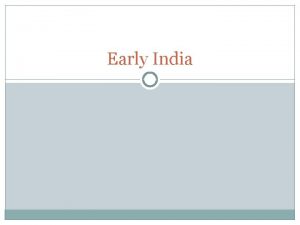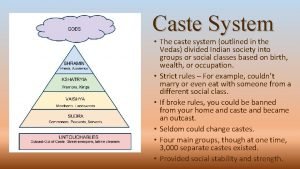The Hindu Caste System Social Structure in India














- Slides: 14

The Hindu Caste System Social Structure in India

How Caste Shapes Society • Definition – A type of social organization/hierarchy in which a person’s occupation and position in life is determined by the circumstances of his birth

How Caste Shapes Society • Rigid, hereditary membership into birth caste • Marriage only among members of same caste • Occupation choices restricted • Personal contact with other castes restricted • Acceptance of fixed place in society

Caste System Benefits Brahmins— thinkers/knower s Khsatriya—doers Vaisya— provide food for the belly Sudra—do the work

How One’s Caste is Determined • Reincarnation – A person is born, lives, dies, and is reborn again many times. Souls (atman) are reborn many times until they are pure enough to be with the creator, Brahma • Karma – A person’s social position in the next life is determined by his conduct in the present life

How One’s Caste is Determined • Dharma – Code of behavior or set of moral and ethical rules that govern the conduct of each social class. Each group has a different set of rules to live by. • Laws of Manu – Hindu book of sacred law – Rules and restrictions for daily life

The Four Castes • Brahmins – Priests, teachers, judges • Usually don’t own land therefore need other castes to work the land provide for them • Khsatriyas – Warriors and rulers (landowners) • Vaisyas – Skilled traders, merchants, farmers

The Four Castes • Sudras – Unskilled workers • Laborers and craft workers • Untouchables – Below the four castes, people who belong to no caste – Outcastes, children of God • Concept of pollution – The most pure at the top (Brahmins), and the most polluted at the bottom (Untouchables)

Brahmins-Priests • Purpose is to help people of other castes fulfill their dharma • Perform rituals and observe vows for the sake of others

Khsatriyas- Warriors & Rulers • Responsible for the leadership of the people • Often rely on advice from Brahmins

Vaisyas-Skilled Traders, Merchants • The people

Sudras-Unskilled Workers • Each subgroup of this caste performs a specific service • Jobs include: – Gardeners – Potters – Clothes washers

Untouchables-The Outcastes • Belong to no caste • Expected to do the “dirty” jobs • Come in contact with animal skins, dead bodies, and human feces • Avoid contact with “caste” Indians for fear of “pollution”

Source http: //www. csuchico. edu/~cheinz/syllabi/asst 0 01/spring 98/16. htm
 Cast system hinduism
Cast system hinduism Why caste system in india
Why caste system in india Indian caste system pyramid
Indian caste system pyramid Brahman
Brahman Caste system india
Caste system india Caste system india
Caste system india Kshatriya caste
Kshatriya caste Caste system definition
Caste system definition Varnashrama system
Varnashrama system Empat fase perkembangan agama hindu di india
Empat fase perkembangan agama hindu di india Lesson 1 origins of hindu india answers
Lesson 1 origins of hindu india answers 4 caste in india
4 caste in india Wadwal caste
Wadwal caste Caste vs class
Caste vs class Religion and conflict theory
Religion and conflict theory
